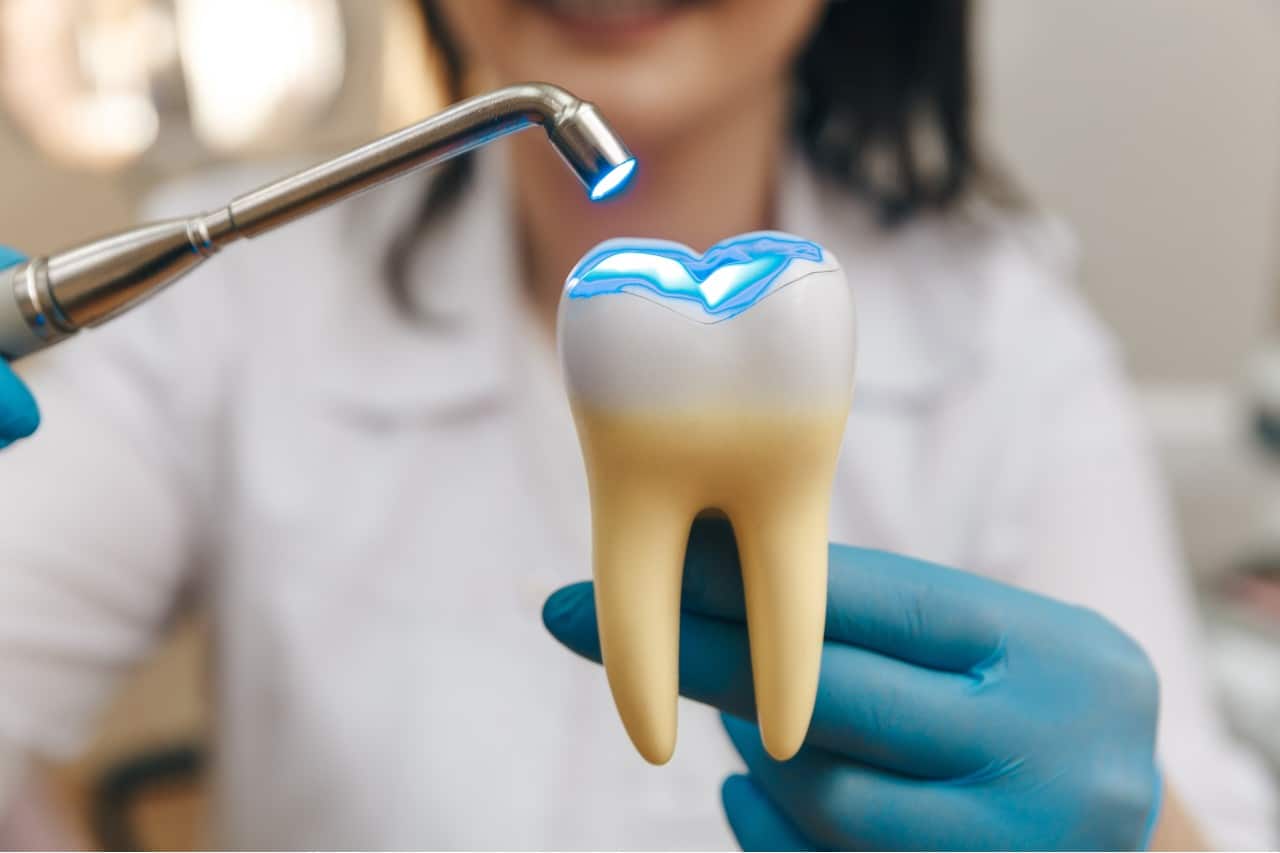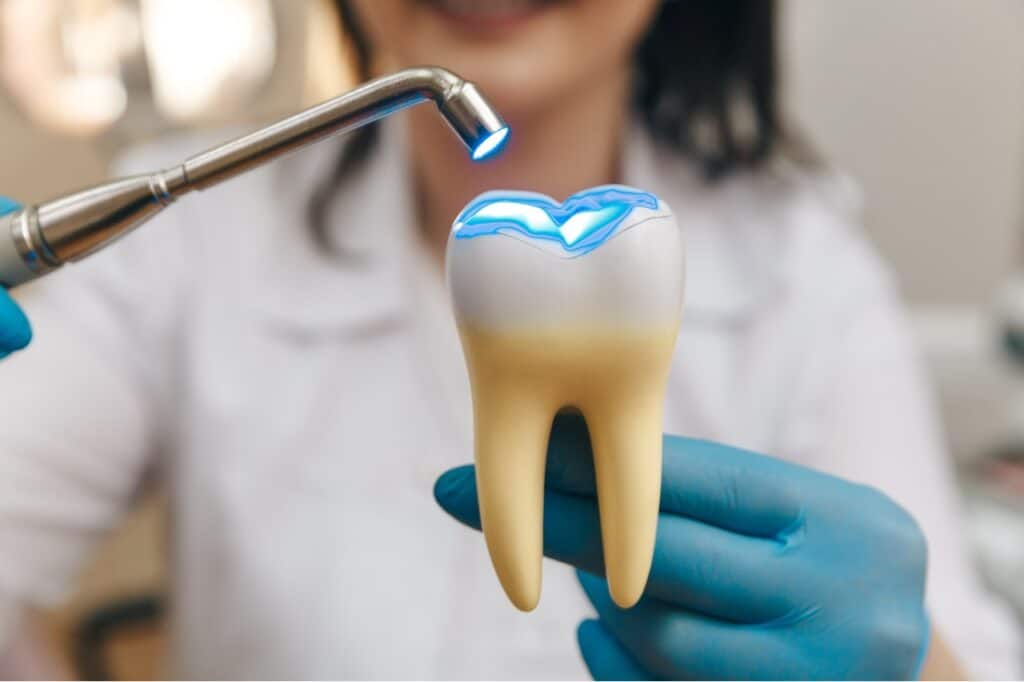The two most common dental materials for restoring teeth are amalgam (silver) and composite (white/tooth-colored) fillings. When choosing a dental material for restoring teeth, we often receive two questions: what is the difference between the two types of materials? Is one type of filling better than the other?
In our office, we offer both amalgam and composite filings, and the choice to use one or the other depends on several factors, including which tooth is being restored, the reason for placing a filling (cavities are not the only thing fillings can fix – other reasons include cracked/broken teeth or excessive grinding of the teeth causing wear and tear), or cost for the patient.
Amalgam has been studied and reviewed extensively for more than 100 years. It is a strong, durable, and long-lasting material to use for filling teeth in addition to being cost-efficient for the patient; amalgam fillings generally last longer than composite fillings. A tooth filled with amalgam is less likely to develop new decay around the filling, and it is easier and faster to place than other types of fillings. Despite being known as “silver” fillings, amalgam is actually made from a mixture of several different metals. Mercury, the metallic element that is used to bind the material together, has raised questions as to whether amalgam is safe to use in dentistry. Extensive studies have been conducted and have not been found to be associated with any negative health effects. The amount released in the mouth under the pressure of chewing or grinding is extremely small and no cause for alarm. The cosmetic factor can also be a concern. When placed, amalgam is a light grey color, but can darken over time. For this reason, our office only places this material on teeth in the back of the mouth where they are less noticeable; composite filling are used for either the back or front teeth.
Composite filling material is made from ceramic and plastic compounds, and is a cosmetically pleasing option for filling teeth; dentists have the ability to blend shades to create a color that is nearly identical to that of the actual tooth. However, they can sometimes stain or darken over time (drinking tea or coffee may trigger this). Its durability is comparable to that of amalgam thanks to improvements made over recent years, including the overall lifespan; composite fillings typically last anywhere from 7-10 years. The tooth being filled must remain completely dry during placement, or the filling risks failing. In addition, this material takes longer to place, requires more technical skill, and is more expensive to use than amalgam – usually about two times more. Some insurance companies cover the cost of the composite up to the price of a silver filling, with the patient paying the remaining amount.
Both amalgam and composite are advantageous options for restoring teeth, with pros and cons for each. Patient preference, finances, patient cooperation, and oral habits all play a part in determining which material is best in a patient’s case. At Creekside Dental, we will take the time to talk with you about your particular treatment needs and determine the best course of action. We would be pleased to answer any further questions that you may have, discuss your options, and keep you on a path toward optimal health!
